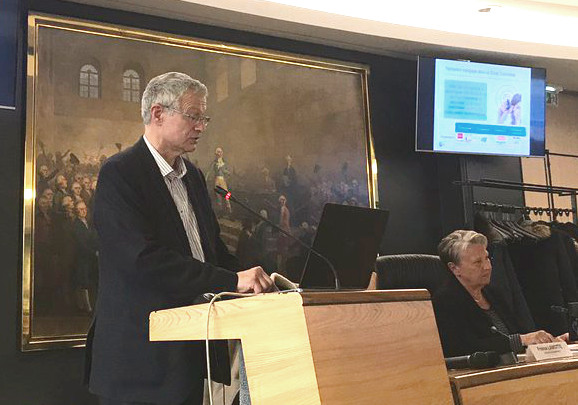On March 7 the Isère General Council hosted a conference entitled “Aging well through innovation: Challenges and outlook from Isère to Europe” attended by Laura Bonnefoy, the General Council’s Vice President for Disability and Independent Living, and Michel Wolny, Director, IRT Nanoelec.
The conference took place during a workshop for the Activage consortium (49 partners from seven European countries), in which IRT Nanoelec is actively engaged. Mr. Wolny’s remarks highlighted the commitment of IRT Nanoelec’s partners to developing innovative, secure products for the Silver Economy.
Activage is a far-reaching initiative financed by the EU Horizon 2020 instrument to demonstrate the socioeconomic and technological benefits of IoT solutions in terms of supporting quality of life, health, and independent living for the elderly. The consortium will also ensure that the solutions developed are interoperable and that they do not infringe upon data privacy.
France’s hub for the project is the Isère district. A personal and organizational support solution combining digital technology and human assistance will be developed and tested locally. The objective is to create solution that helps the elderly continue to live at home as long as possible. Activage also rounds out the Isère General Council’s own independent living program, IsèreADOM. According to local project stakeholders, “Isère is a good test case, because we are adding a new technological component to an existing organization in a way that meets an additional user need.”
The IRT Nanoelec partners will address the technical aspects of the solution and its implementation. The kit that is being implemented includes around fifteen heterogeneous sensors connected to a single concentrator via sensiNact middleware. The kit is personalized and can be modified, expanded, or upgraded to meet the specific needs of its end users, the elderly and their caregivers. The idea is to enhance comfort and safety and detect hazardous situations and changes in situations to predict a loss of autonomy and reduce the risk of accidents and the resulting hospitalizations.
The initial implementation targeted a cohort of young, active retirees. Other cohorts are currently being recruited with a view to targeting more vulnerable populations, such as senior citizens already receiving assisted living allowances from the government and those returning home after hospitalization and rehab.





